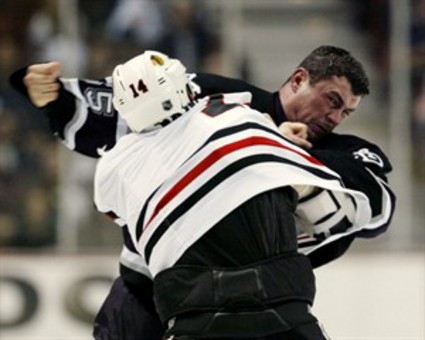British Columbia Supreme Court Justice Austin Cullen ruled that professional hockey player Garrett Burnett failed to prove the essential elements of negligence in his lawsuit against Cheers Nightclub. The former National Hockey League player suffered a traumatic brain injury when an unidentified patron brutally assaulted Burnett by hitting him with a barstool as he was being ejected from the club in the early morning hours of December 26, 2006. Lawyers for Cheers Nightclub argued that Burnett’s use of steroids was to blame for his victimization.
Cheers Nightclub presented testimony from two expert witnesses. The medical experts suggested that anabolic steroid use by Garrett Burnett made him liable for the injuries he suffered during the bar altercation. They essentially argued that steroids cause “roid rage”, aggression, violence, mania and psychosis. They implied that steroid-induced aggression may have been, at least partly, responsible for precipitating any injuries suffered by Burke.
Dr. John McNeill, a Professor of Pharmacological Sciences at the University of British Columbia, testified that “steroids taken in November and December of 2006 could certainly have influenced Mr. Burnett’s mental state and affected his behaviour on December 26, 2006 at the time of the incident.” McNeill testified that anabolic steroids, especially in combination with alcohol, could have affected Burnett’s behavior on the night he was assaulted.
It should be noted that McNeill based his testimony on the following assumptions regarding Burnett’s use of steroids. Burnett denied using illegal steroids.
- Burnett started using anabolic steroids to recover from a major knee injury suffered in the American Hockey League during the 1998-1999 season.
- He continued to use anabolic steroids throughout his professional hockey career. He played in the NHL as an enforcer for the Anaheim Mighty Ducks during the 2003-2004 season. He discontinued the use of steroids in the summer of 2004 when the NHL began steroid testing.
- Burnett started using “medications and/or supplements to enhance his testosterone levels” that appear to have included doctor-prescribed testosterone during the 2004 to 2006 period.
- Burnett resumed using injectable steroids while playing in the semi-professional league Ligue Nord-Americaine de Hockey (LNAH) in November 2006. The LNAH did not have a steroid testing policy in effect.
Dr. James Kennedy, an internal medicine, clinical pharmacology and toxicology expert witness, provided testimony concerning the anabolic steroids and ancillary drugs prescribed to Burnett by a California physician named Lester Lee.
Kennedy testified that Lee’s notes indicated the use of (doctor-prescribed) anabolic steroids between January 2004 and June 2006. Lee noted the steroid side effects of hypogonadism, gynecomastia, suppressed HDL cholesterol and elevated liver enzymes consistent with the use of steroids when he first examined Burnett. Lee prescribed anabolic steroids (testosterone), human growth hormone (hGH), human chorionic gonadotropin (hCG), Clomid and Nolvadex during this period.
It is unclear if the testimony regarding Burnett’s use of anabolic steroids and performance-enhancing drugs (PEDs) during his professional hockey career had any impact on Judge Cullen’s final ruling.
The information regarding the alleged steroid use by Garrett Burnett comes shortly after former NHL player Georges Laraque alleged that steroid use was common in hockey.

Source:
Canadian Press. (November 2, 2011). Former Mighty Ducks enforcer loses brain-injury lawsuit. Retrieved from http://www.cbc.ca/news/canada/british-columbia/story/2011/11/02/bc-burnett-lawsuit-lost.html

